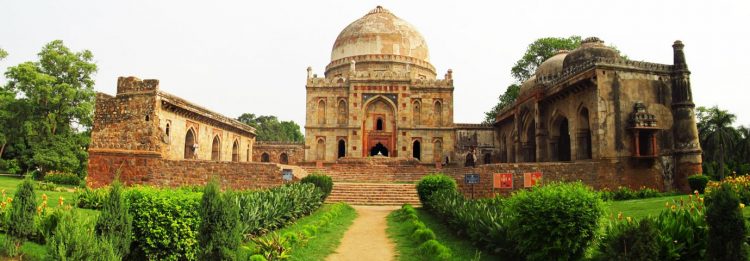Lodi Gardens – The Magnificent Monument
Lodi Gardens – The Famous monument
Lodi Gardens, also called Lodhi Gardens, are situated in the Indian capital New Delhi. The gardens spread 90 acres and have the Tomb of Sikandar Lodi, constructed in the 15th century A.D. Lodies were the rulers of Northern India, Punjab and Khyber Pakhtunkhwa province. They ruled from 1451 to 1526 A.D. In the later years, Babur conquered Delhi and founded the Mughal emperor in India in 1526 AD.
History of Lodi Gardens
The first tomb in the gardens was built in 1444 AD in honour of Mohammed Shah, the second ruler of the Sayyid dynasty. The construction of the tomb was commissioned to Ala-ud-din Alam Shah by the Lodies. The tomb’s architecture is stunning and constructed in the Indo-Islam construction style. Still, we can see the vault from the roadside, symbolizing Lodi’s history. The octagonal chamber built the tomb, and the chakras stone was used to construct the roof and guldastas on the corners.

Another famous tomb in the Garden is Sikander Lodi’s, constructed by his son Ibrahim Lodi in 1517. The tomb is a very similar design to Mohammed Shah Tomb. After Babur defeated Ibrahim Lodi in 1526 AD, the Mughal emperors neglected to look after the graves. So they started fading its glory. However, the Mughal Emperor Akbar wanted to make the Garden a place to keep the essential administrative field. So he constructed a library and, at the same time, renovated the Garden and tombs. Since then, the Lodi gardens have become a famous visiting place in Delhi. Again in 1866, the British did the renovation work of the graves and made the garden beautification.
Tomb Construction after the years
After the Garden’s construction, two villages grew. Then the monuments seemed like standard construction in a town. But during the British Raj, the Governor-General of India, Marquess of Willingdon, ordered the relocation of the cities and wanted to make the place a beautiful park. Then the General’s wife, Lady Willingdon, made all arrangements to landscape the Garden. Hence the Garden is called ‘Lady Willingdon Park’. After India gained Independence, the gardens were named the present Lodi gardens. Again in 1968, the famous landscapist J A Stein redesigned the gardens and constructed an attractive glasshouse in the middle of the park.
Later in 2005, the Archaeological Survey of India organized yoga awareness and walking benefits programs among the students and the general public. Since then, the gardens have become places for morning walkers and yoga enthusiasts. It is also a picnic spot for Delhi residents who want to spend joyfully on holidays and occasions.
Lodi Gardens Architecture
We can see a ‘Big Dome’ and a domed masjid in the middle of the gardens. These two were constructed by Sikander Lodi in 1494 AD. During the same period completed, the Gumbad was a Glass dome built of glazed tiles. We can see here many magnificent constructions and present the Archeological Survey of India maintaining the gardens. Visiting these gardens make our joy and a lifelong memory.